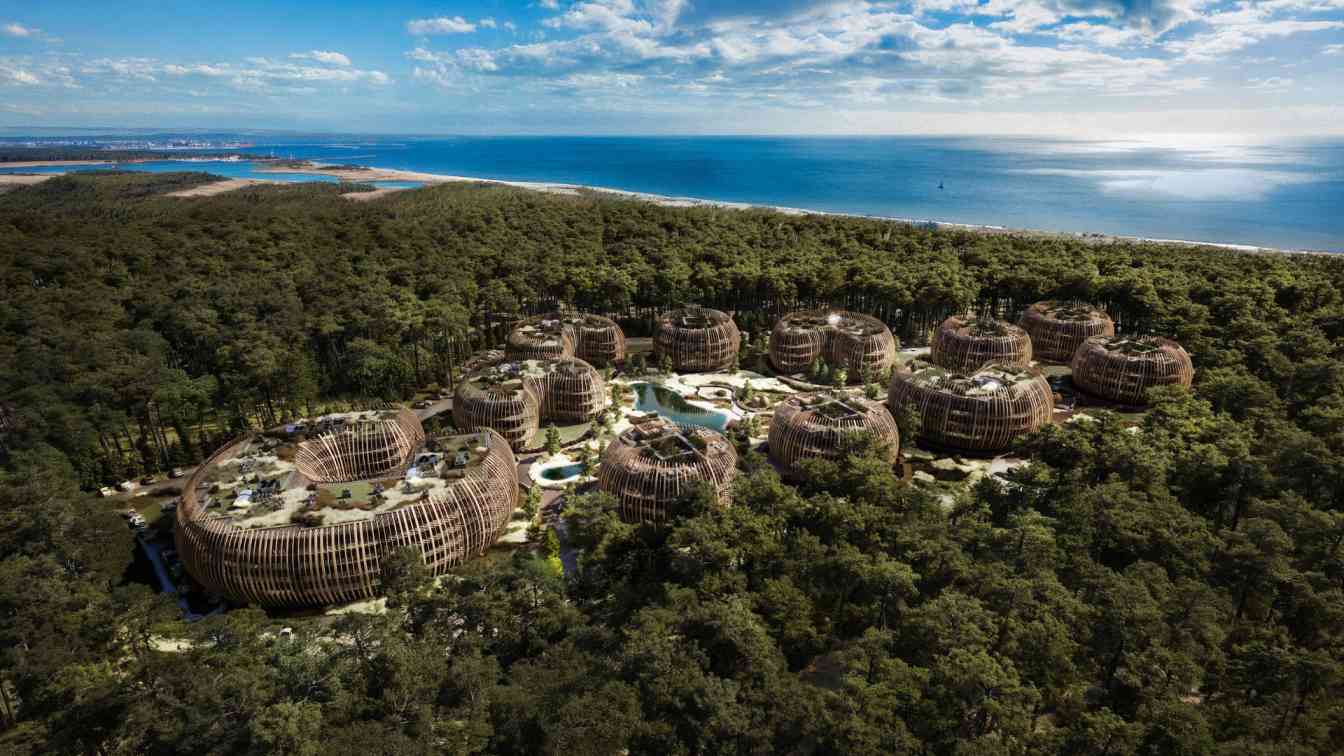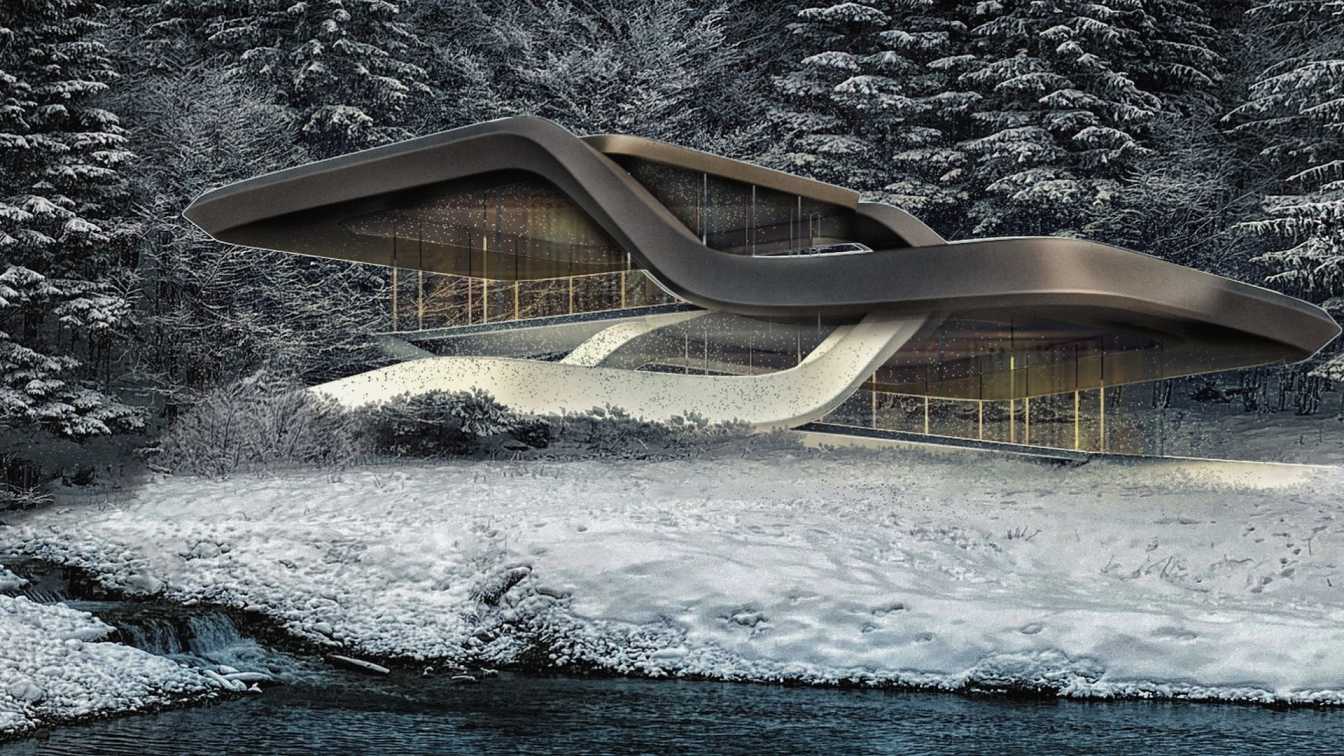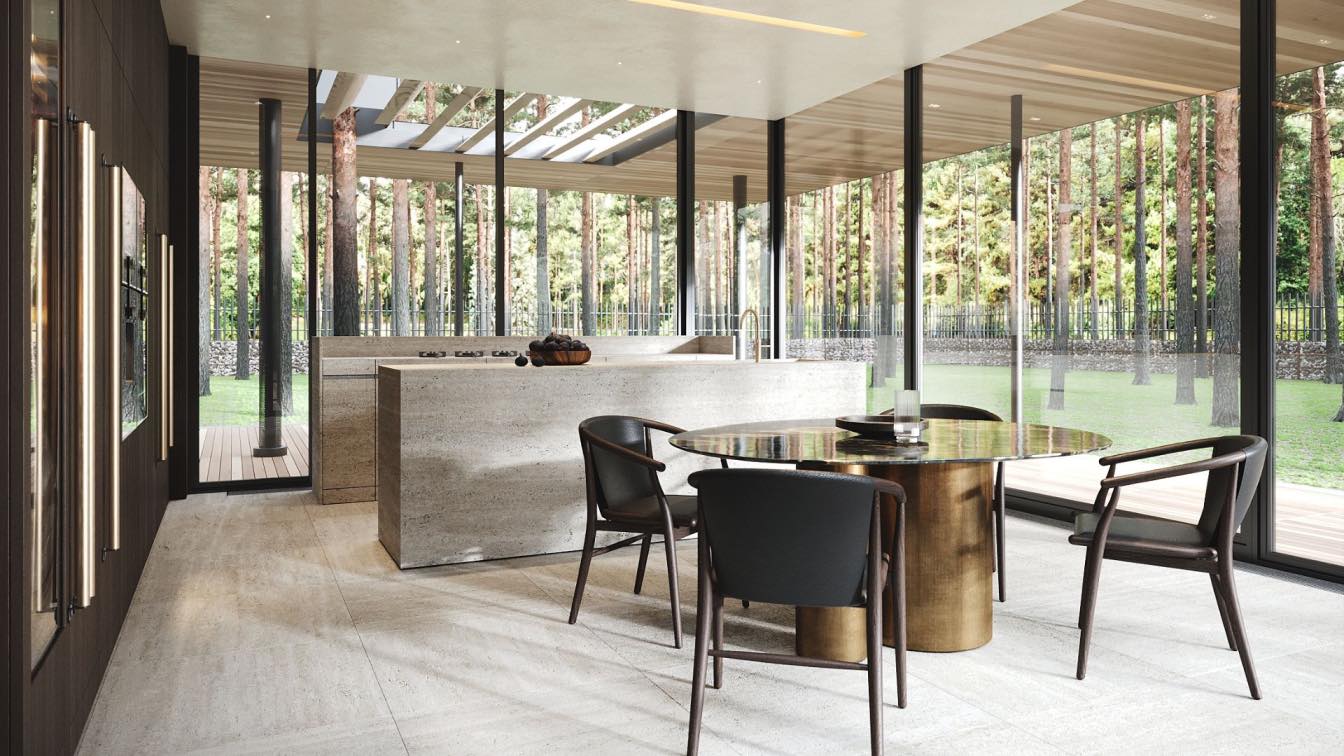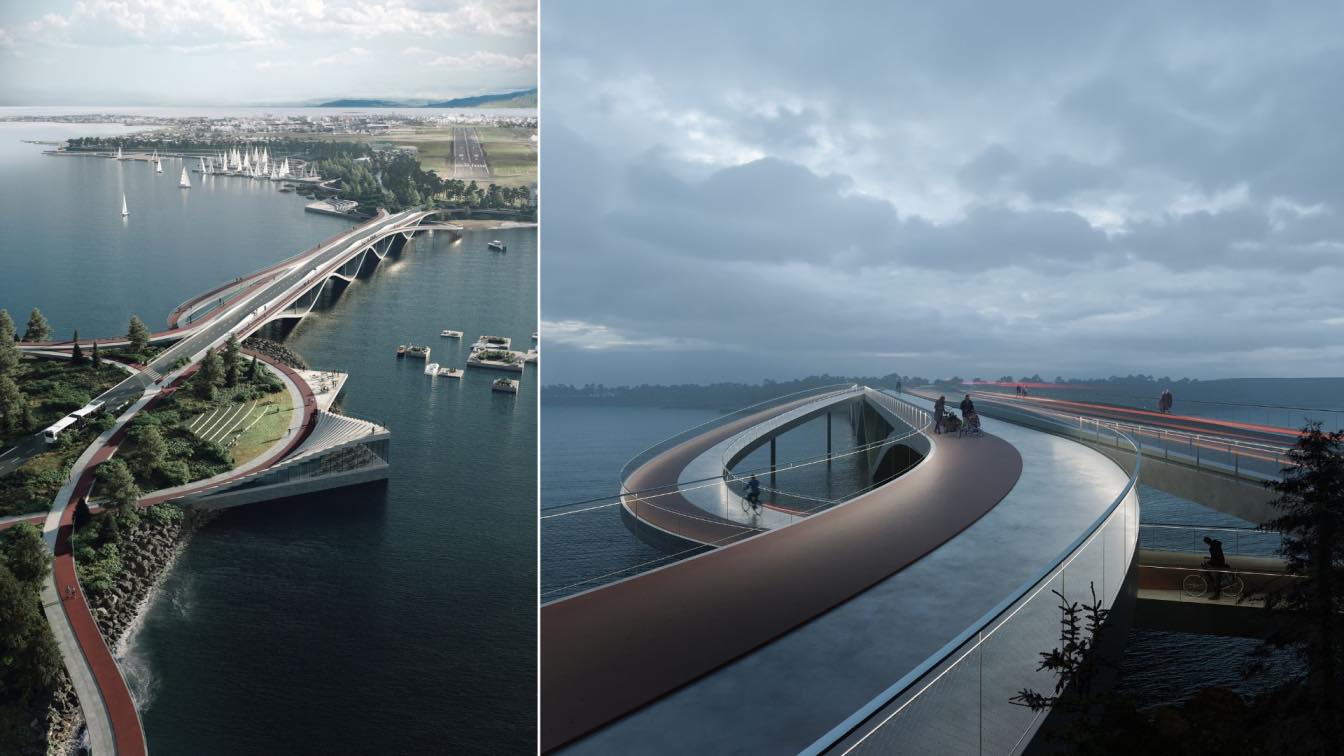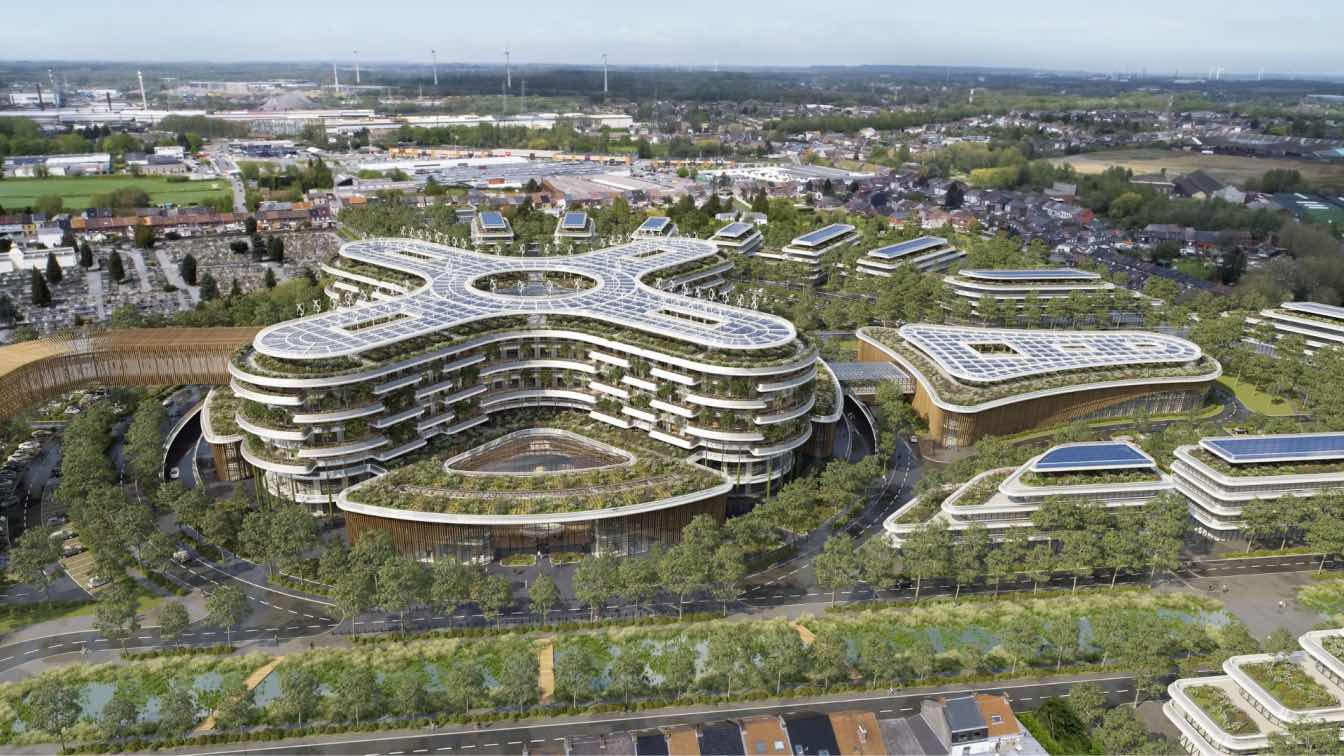Sobieszewo Island – a place where the rustling of grasses blends with the scent of pines, and life follows the rhythm of nature – will soon become the stage for a unique architectural endeavor. Amid this pristine landscape, a complex of nine apartment-hotel pavilions will emerge, designed by Ideograf Studio under the direction of Paulina Czurak-Czapiewska. Inspired by the principles of biophilic architecture, the project not only blends into the landscape but becomes its organic extension.
Sobieszewo Island – Where Nature Leads
Just a few kilometers from the center of Gdańsk lies a world apart — Sobieszewo Island. A green enclave where pine forests, dunes, wetlands, and oxbow lakes weave together into a mosaic of habitats as diverse as those in the most precious national parks. Under skies crisscrossed by migratory birds, life unfolds according to the ancient rhythms of nature. Protected by the Bird Paradise and Mewia Łacha reserves, the island is home to over two hundred bird species, including little terns, bitterns, ringed plovers, and the majestic white-tailed eagles.
“Anyone who visits Sobieszewo Island quickly realizes this is no ordinary place — it’s a self-contained microcosm, where humans are guests, not hosts,” says Paulina Czurak-Czapiewska. It is here, on the site of a former military facility — an area already transformed by human activity — that a project will rise, one that respects and integrates with the natural environment rather than disrupts it.

Architecture Inspired by a Bird’s Nest
The symbolic bird’s nest — ephemeral yet enduring, intimately tied to nature — became the inspiration for the design. The pavilions are arranged irregularly, like nests hidden among grasses and reeds. Their soft, organic forms and façades made of wood, stone, and glass harmonize with the hues of sand, water, and forest. Just as a nest is crafted from materials found nearby, the spaces envisioned by Ideograf grow from the local landscape without imposing artificial geometry upon it. “In the bird’s nest, we saw not only a metaphor for shelter but a model of perfect dialogue with place. A nest does not alter the landscape — it becomes part of it. That is exactly the kind of project we wanted to create: quiet, organic, deeply rooted in the nature of Sobieszewo Island,” explains Czurak-Czapiewska.
Biophilic Architecture – A Return to Our Roots
The project draws from the philosophy of biophilic architecture, which is gaining relevance in response to the growing disconnect between modern humans and the natural world. As early as the 1980s, Edward O. Wilson formulated the biophilia hypothesis — the idea that humans have an innate, biological need for contact with nature. This concept was further developed by Stephen Kellert and Elizabeth Calabrese, who demonstrated that architecture which embraces daylight, natural materials, water, and greenery can reduce stress, improve health, and boost creativity. Roger S. Ulrich confirmed this with empirical evidence, showing that even a view of nature from a window can significantly accelerate recovery. In 2014, Browning, Ryan, and Clancy outlined 14 patterns of biophilic design, showing how spaces can help restore the lost bond between humans and nature.
Aware of this research, Paulina Czurak-Czapiewska has created a project that does not place architecture above nature, but builds upon it. “We don’t build against people and nature. We build thanks to them. We want every person living among these pavilions to feel that nature is not decoration, but a source of strength and balance,” emphasizes the architect.

Landscape as a Living Organism
Ideograf’s project goes beyond preserving existing nature — it seeks to restore it. Around the pavilions, new dunes, heaths, and groves of dwarf pines will be created using only native species. Ponds will attract amphibians, deadwood will provide shelter for hedgehogs, and nesting boxes on trees and façades will once again invite birds to the island. Here, nature is not a backdrop — it is an equal participant in the life of the space. The project reflects a contemporary approach to biodiversity conservation, creating an environment that welcomes both people and the island’s wild inhabitants.
“If we want people to feel truly well in a space, we must remember that we are part of a greater organism — of earth, forest, and water. Our designs are invitations to reconnect with that world,” says Czurak-Czapiewska.
A New Chapter for Sobieszewo Island
Ideograf Studio’s project redefines the concept of luxury — moving away from ostentation and toward authenticity: silence, light, space, and closeness to nature. In a world increasingly seeking solace, Sobieszewo Island becomes proof that 21st-century architecture can tell a story not of dominance, but of harmonious coexistence.
“We don’t build for ourselves. We build for the future — for the places that were here before us and that we must leave better than we found them,” concludes Paulina Czurak-Czapiewska.
















